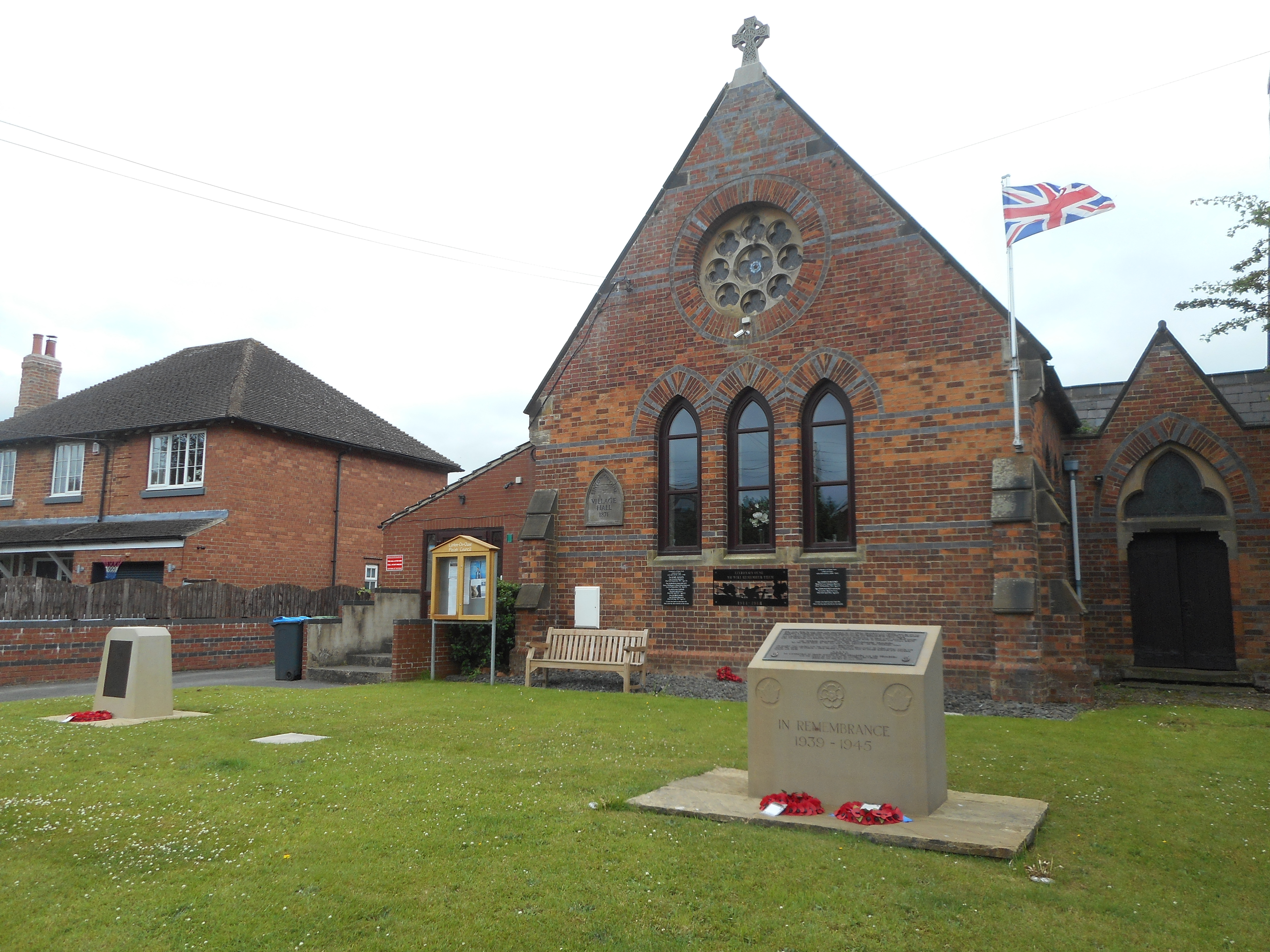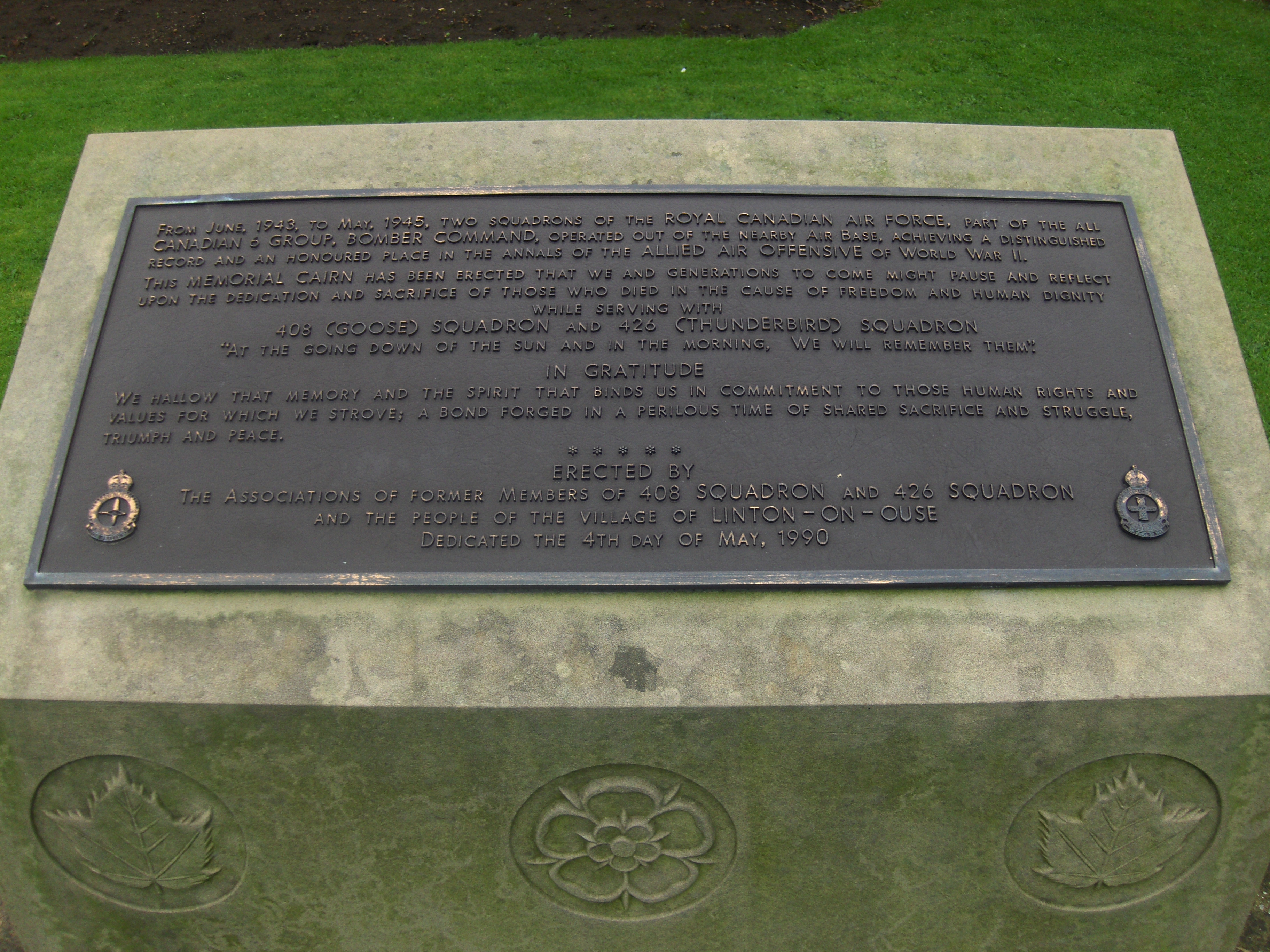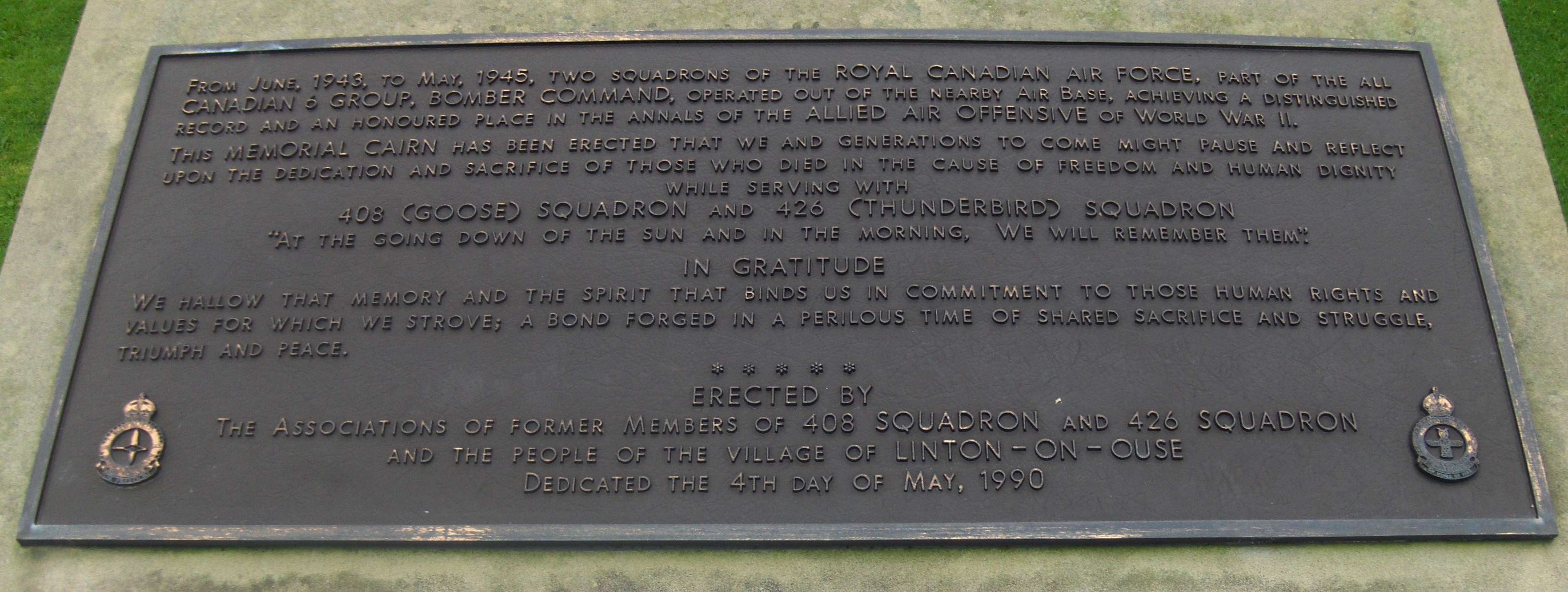Carr, Leo Augustave
Personal Information
| Rank | Sgt |
| Forename(s) | Leo Augustave |
| Surname | Carr |
| Gender | M |
| Age | 26 |
| Date of Death | 14-01-1944 |
| Next of Kin | Sson of Thomas Joseph Carr and Edith Bell Carr (née Jones), of Belleville, Ontario, Canada. Husband of Elsie Adele Carr (née Dusome), whom he married on 7 September 1940. Father of Gail Norma Carr. |
Aircraft Information
| Aircraft | Avro Lancaster II |
| Serial Number | LL699 |
| Markings | EQ-C |
Memorial Information
| Burial/Memorial Country | Germany |
| Burial/Memorial Place | Hanover War Cemetery |
| Grave Reference | Coll. grave 10. C. 3-5. |
| Epitaph |
IBCC Memorial Information
| Phase | 2 |
| Panel Number | 141 |
Enlistment Information
| Service Number | R/251899 |
| Service | Royal Canadian Air Force |
| Group | 6 |
| Squadron | 408 (Goose) |
| Squadron Motto | For freedom |
| Trade | Air Gunner |
| Country of Origin | Canada |
Other Memorials
| Location | Village Centre, Linton on Ouse, North Yorkshire |
| Country | United Kingdom |
| Memorial Type | Stone Memorial and inscribed slate tablet |
| Memorial Text | In memory of 408 (Goose) and 426 (Thunderbird) Squadrons of R.C.A.F |
Miscellaneous Information
| Leo was born on 6 October 1917 at Belleville, Ontario. His father (who was deceased by the time of Leo's enlistment) was born at Carlton Place, Ontario and had been a sheet iron and pattern maker and his mother was born at Picton. He had four sisters Jean, Anna and two more who were married. Another sister, Jeanne, had died aged six years. He attended Belleville Collegiate Institute and vocational school, at Belleville. He had various employment including in a Stock room for Shell Oil, a machine shop and for De Haviland aircraft amongst others. |
| Leo enlisted on 8 April 1943. After training he was posted to the U.K. and embarked from Halifax on 1 November 1943arrivinh in the U.K. at 3 PRC on 10 November. He was then at 1664 CU on 9 December 1943 and then at 408 Squadron. Sadly he was to lose his life flying from there on 14 January 1944. |
Commonwealth War Graves Commission
Fellow Servicemen
Please note that this list gives all the losses aboard the quoted aircraft and occasionally these may have occurred on an earlier date when the aircraft was not itself lost. Please check the dates of death carefully.
Last Operation Information
| Start Date | 14-01-1944 |
| End Date | 15-01-1944 |
| Takeoff Station | Linton-on-Ouse |
| Day/Night Raid | Night (82% moon) |
| Operation | Brunswick. 498 aircraft, all but two of them Lancasters. First major raid on this town of the war. 38 Lancasters Lost (7.6%). The German controller tracked the bomber stream from just off the English coastline and many German fighters entered the stream over Bremen, continuing to score hits until the stream left the Dutch coast on the return leg. Pathfinder losses were unusually high (11 aircraft). The raid was not successful even though the town was not expansive alongside most targets. Many bombs fell in open countryside or in neighbouring towns. Only 10 houses destroyed. 14 deaths on the ground. |


